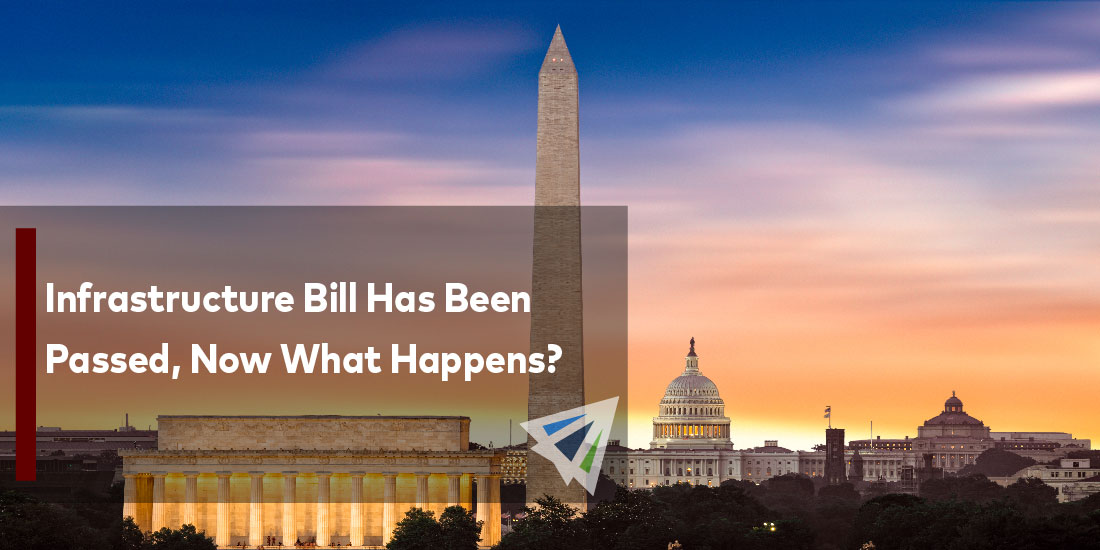Infrastructure Bill Has Been Passed, Now What Happens?
The international shipping industry has been in shambles because of increased freight traffic, low port staffing and trucker availability, and a slew of other factors. It’s a mess that even the most efficient 3PL’s and ocean ports are struggling to clean up. There are major backups on port grounds as port workers struggle to move freight forward for pickup, more container ships arriving than space available, and not enough truckers to pick up what’s coming into the terminals.
The issue has been viewed and treated as a national crisis, and the Biden administration has been hard at work to devise a solution for the congestion. He just signed the biggest freight transportation investment bill in over 65 years, which allocates hundreds of billions of dollars to several facets of the industry.
The Bill includes a $110 billion investment for roads, bridges, and major infrastructure projects, as well as $66 billion for rail work, and an additional $17.4 billion for ocean ports and inland waterway improvements. In addition to that $193.4 billion, there is $20.5 billion set aside for 3 major multimodal discretionary grant programs over 5 years.
The signing of this new bill comes as a major relief to port workers who have been asking for help for years at this point. Infrastructure improvements aren’t cheap, and they don’t happen fast. But now that the bill is passed, the question is, where are those funds going and how exactly are they going to be utilized once they’re accessible?
How Will the Infrastructure Bill Be Implemented?
While all pieces of the supply chain certainly need major improvements, the Biden administration is focused on expediting the funds and work to happen on ocean ports, as this is where the greatest bottlenecks are. But the changes aren’t expected to happen quickly.
The most optimistic assumptions would place application review and approval at roughly 2-3 months from today, and that’s just to get the process started. Realistically, industry experts expect the investments to not fix anything in the short-term. Congestion is expected to last through 2022, and most of the infrastructure improvements that will make an actual difference aren’t reasonably expected to be finished until the end of 2023.
In The Meantime…
Just “dealing with it” isn’t really an option right now. Ports, shippers, and buyers are all suffering because of the major congestion, and something needs to be done immediately in the interim. That’s where state-specific and port-specific action is being taken.
In southern California at the ports of Long Beach and LA, many of the bottlenecks happen in the transition from port-to-inland transport. Since many of these issues are related to state-controlled highways or intermodal connectors, short-term action can be taken to alleviate much of the congestion. Some of these minor changes can be executed in 6-12 months and will make a major difference in the efficiency of container movement out of the ports.
These state-controlled changes are more likely to happen as there’s a guarantee of federal funds to follow shortly afterwards.
What to Expect From Here
In summary, everyone is pushing hard to make the necessary infrastructure changes to keep freight moving inland in the U.S., but it’s going to take time, and the whole process must be a tag-team effort between states and the federal government.
While Biden has signed nearly $200 billion into action for necessary improvements, many of them aren’t going to make an actual difference until 2023 or later. So as the funds are allocated towards major projects, it’s on local state officials to sign off on minor improvements to keep freight moving efficiently. Recently, state and federal funds have been allocated to projects such as creating a new berth in the Tampa Bay port, improvements to the I-95 highway in Florida, railway projects in Southern California.
Please reach to our team at InterlogUSA for more information or questions you have regarding your shipping situation.
